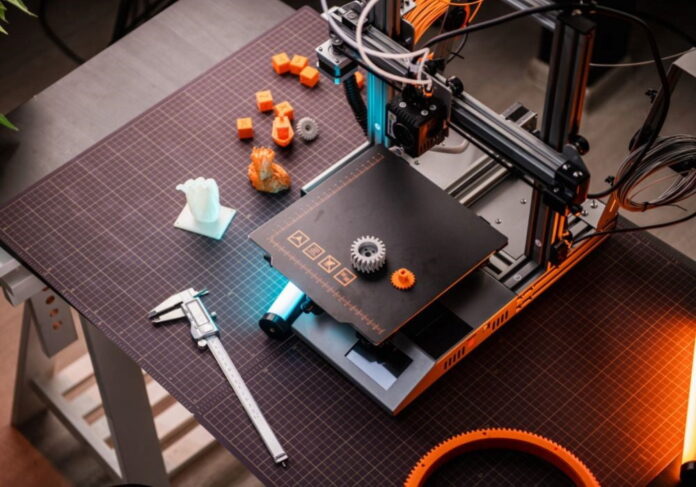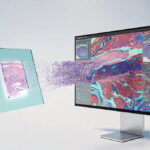3D printing technology has advanced in recent years and found applications in multiple markets. However, some caregivers might think the medical world would not find a use for it. That is not true, and at least five healthcare products can be made with 3D printers.
Reinforced Tubing
One medical product manufacturers can produce using nylon Kevlar 3D filaments is reinforced tubing. Cleaning rooms and veterinary rooms use the tubing to separate fluids. Kevlar is ideal for tubing since it is flexible, and medical practitioners can clean it easily.
Surgical Tools
Another category of healthcare products that can be made with 3D printers is surgical tools, including scalpel handles, forceps, and medical clamps. What makes 3D printing so ideal for these products is that the technology allows manufacturers to modify the prototypes and final products based on surgeon feedback.
After receiving the feedback, manufacturers can customize the tools for a specific surgery the doctors will perform and produce them at lower costs. The technology also allows surgeons to do more precise work with smaller tools that can operate on tiny areas. This helps them improve their outcomes as they help their patients.
Customized Prosthetics
3D printers enable the medical world to manufacture prosthetic limbs designed specifically for patients. Amputees usually wait a very long time to receive their prosthetics, but 3D printing has helped significantly shorten that window.
3D printing also helps patient finances. Thanks to 3D printing, amputees can access prosthetics that are much less expensive than their costly counterparts while enjoying the same level of product quality.
Organ Replicas
Another medical use of 3D printing is the creation of organ replicas specific to a patient. These replicas can help surgeons practice complex surgeries they need to perform before the day of the procedure. Preparedness enables professionals to anticipate and avoid any potential problems.
With this knowledge, surgeons can develop their strategies and find better outcomes for patients. Organ replicas also help surgeons reduce the time of the procedures so that the patients spend less time under the knife. The usefulness of the models does not end after the surgery. Educators can use organ models to train the doctors of tomorrow.
Prescriptions
Drug manufacturers could use 3D printers to produce customized drugs for treating patients. Today, many patients need to organize their medications around certain times of the day for their dosage.
Some even divide their pills to get a specific dosage. A 3D printer would allow manufacturers to customize pills to meet a patient’s needs. Manufacturers could even print the pills in unique shapes to make the process more fun for children.
Some caregivers may feel resistant to changing their methods, but a 3D printer would allow them to enhance their skills. This technology could give them the opportunity to be better at their jobs and for their patients to enjoy longer, happier lives.
Read Also
- Automated Healthcare Software Solutions: How Intelligent Platforms Are Redefining Clinical, Administrative, and Operational ExcellenceThe healthcare industry is undergoing a seismic transformation. Rising patient volumes, value-based care models, staffing shortages, and complex regulatory demands have prompted organizations to look beyond traditional tools and embrace advanced software automation. As providers search for innovative partners capable of tailoring these sophisticated systems to real-world workflows, many turn to MCSI (Managed Care Systems,… Read more: Automated Healthcare Software Solutions: How Intelligent Platforms Are Redefining Clinical, Administrative, and Operational Excellence
- Why Whole Slide Imaging Shapes the Future of Digital PathologyWhole slide imaging has become one of the most important developments in modern pathology. It changes how tissue is examined, how cases are shared and how pathologists collaborate with the wider care team. More than a technological upgrade, it represents a shift in how laboratories think about their workflow, their storage needs and the tools… Read more: Why Whole Slide Imaging Shapes the Future of Digital Pathology
- Comparing 2025 Dental Practice Management Software OptionsSoftware Key Strengths Potential Limitations Best For Dentimax • Offers both cloud-based and on-premise/server deployment. • Tight integration between imaging (e.g. X-ray sensors) and practice management, charts, treatment planning, imaging all in one. • Transparent pricing and relatively simple UI/usability; solid for small to medium general practices. • May lack some of the… Read more: Comparing 2025 Dental Practice Management Software Options
- Top Innovations in Dermatology and Skincare TechnologiesHave you ever wondered how skincare keeps getting better year after year? From fighting acne to reducing wrinkles, today’s treatments seem more advanced than ever before. The tools and techniques used by dermatologists today are smarter, safer, and more effective than those we had just a few years ago. These breakthroughs don’t just help with… Read more: Top Innovations in Dermatology and Skincare Technologies
- Telehealth and Beyond: Building a Connected Continuum of CareHealthcare is on the verge of a radical transformation. Technology no longer simply supports medicine; it actively shapes how care is delivered and experienced. Achieving a seamless continuum demands more than deploying tools—it requires intentional design, coordinated teamwork, and innovative platforms that adapt to diverse clinical and patient needs. This article explores key strategies for… Read more: Telehealth and Beyond: Building a Connected Continuum of Care






